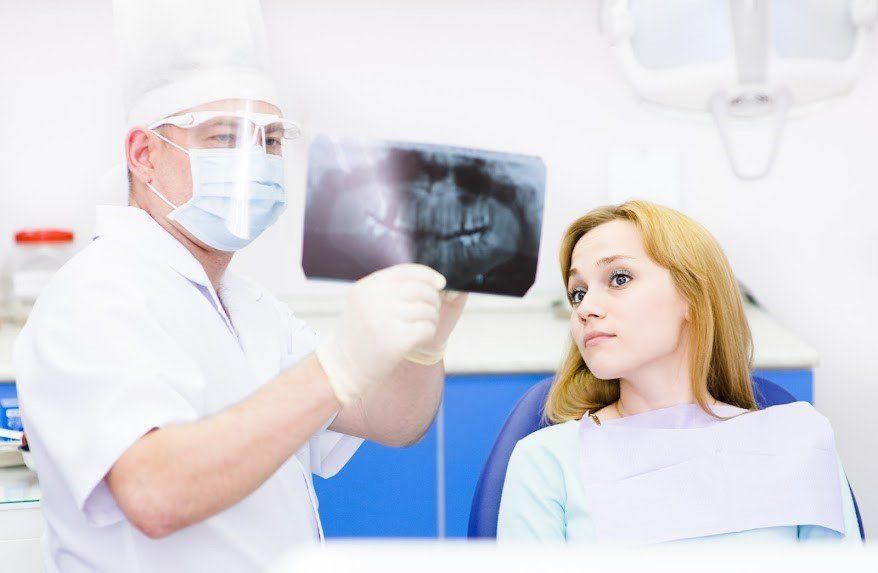Valley Oak Dental Group
Sometimes, problems in a child’s mouth cause their baby teeth to be retained and/or their permanent teeth to erupt improperly. Here’s what you should know if your child has issues with baby-tooth shedding or permanent-tooth eruption.
Tooth Shedding and Eruption Follow a Schedule
Normally, babies cut their first teeth between six and ten months of age and start losing their baby teeth around six to seven years of age. Permanent teeth begin erupting shortly after the first baby teeth are shed.
Some kids cut their first baby teeth months earlier or later than normal, or they have permanent-tooth eruption earlier or later than normal. Each child is an individual, so nothing is wrong if their tooth eruption is not by the book, as long as the baby teeth are shed and permanent teeth do eventually erupt.
However, parents should keep an eye out for problems with baby-tooth retention that lasts too long. If your child doesn’t lose their baby (also called primary) teeth within a year of the expected shedding date, the retained baby teeth can cause permanent-tooth eruption issues.
Too-early removal of baby teeth can also cause issues with eruption of permanent teeth. If baby teeth are removed too early due to trauma, infection, or other causes, the eruption of permanent teeth will be delayed.
Baby-Tooth Retention Has Several Possible Causes
Baby-tooth retention occurs for several reasons. Your dentist will perform X-rays and other diagnostic tests to discover the cause of retained teeth.
Some of the reasons for retained baby teeth include:
- Obstructions
- Genetics
- Misalignment of a permanent tooth
- Trauma
- Infection
- Late eruption of a permanent tooth
- Ankylosis, or fusing of baby tooth to bone
According to Colgate, in 2.5 to 6.9 percent of baby-tooth retention cases, no permanent tooth is under the baby tooth. Trauma, endocrine disorders, and genetics may all play roles in absent permanent teeth. The condition affects more girls than boys.
In some cases of missing permanent teeth, dentists will try to use the baby tooth as an anchor for a permanent restoration. If the baby tooth is crooked or otherwise unsuitable, the dentist removes the retained primary tooth and installs a bridge or implant to replace the missing permanent tooth.
Ectopic Eruption of Permanent Teeth Requires Attention
When a permanent tooth emerges from the gums in a spot where it shouldn’t be, the condition is called an ectopic eruption of the tooth. As with baby-tooth retention, there are several possible causes of ectopic tooth eruption.
Issues that may cause ectopic permanent-tooth eruption include:
- Trauma to primary tooth
- Genetics
- Retention of primary tooth
- Extra teeth
- Cleft lip or palate
- Ankylosis of primary tooth
Overcrowding of the jaw can also lead to ectopic eruptions of permanent teeth. This type of abnormal tooth eruption is due to a too-small jaw size for the shape or orientation of permanent teeth. Ectopically erupted teeth may emerge from the gums above the primary teeth, in gums next to the cheek, or in the gum area under the lips. Ectopic teeth may also erupt into the palate or even the nose.
Ectopic eruption can occur with molars, incisors (front teeth), and canine teeth. In some cases, ectopic eruption of permanent incisors causes early loss of the primary tooth as the root is resorbed.
Treatment for Ectopic Tooth Eruption Varies
In some cases, an extra tooth grows next to a permanent tooth, causing the tooth to be crowded and erupt at an odd angle in the gums. In the case of an extra (or supernumerary) tooth, the dentist may extract the extra tooth and use retainers to urge the remaining permanent tooth into normal position.
If a retained baby tooth is the issue, the dentist may remove the baby tooth and see if the permanent tooth corrects itself. If the permanent tooth continues to grow in an abnormal position or the ectopic tooth can’t correct itself, the dentist will use orthodontic therapy to realign the tooth in the mouth.
Dentists may use fixed orthodontic appliances at first to provide a strong framework for the ectopic tooth. After the tooth position improves, the child may need to wear a removable retainer for a few months to keep the ectopic tooth moving in the right direction.
When molars erupt ectopically, the condition may not be visibly noticeable at first. However ectopically erupting molars can cause significant pain in the back teeth of children with the dental condition.
A decaying baby molar may be the cause of an ectopic permanent molar eruption. A decaying primary molar can cause infection in adjacent teeth, leading to chewing problems and inflammation.
Once the bad baby molar is removed, the ectopically erupting molar will often self-correct as it emerges from the gums. The dentist may install a temporary space maintainer to help guide the molar into the right position.
If your child is not losing their baby teeth as they should or they have permanent teeth erupting in the wrong spots, contact Valley Oak Dental Group right away. We offer compassionate, expert pediatric dental care for young Californians in Manteca and throughout all of San Joaquin County.
Share Post
Search Post
Recent Posts








